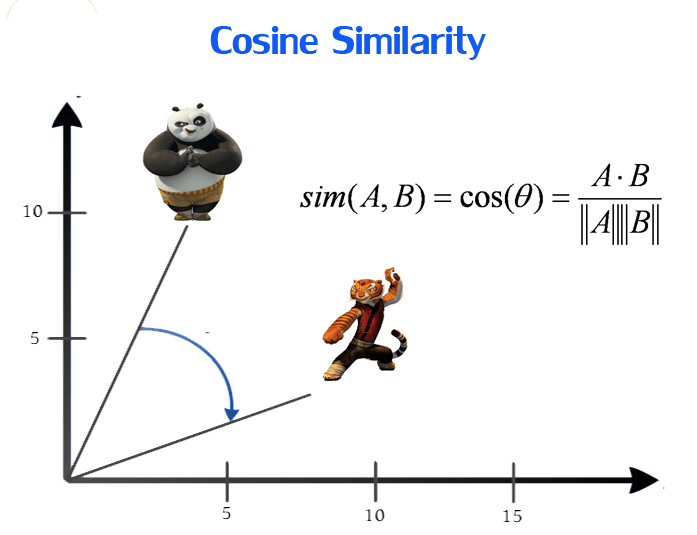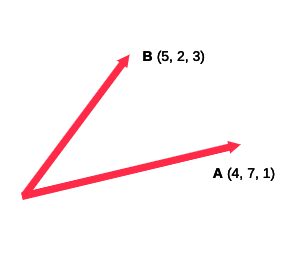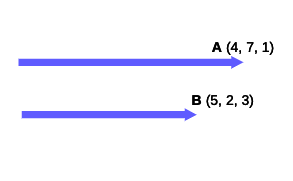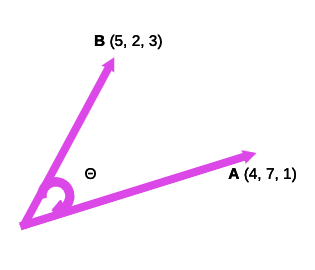Cosine similarity
Feature Engineering for NLP in Python

Rounak Banik
Data Scientist

The dot product
Consider two vectors,
$$V = (v_1, v_2, \cdots, v_n), W = (w_1, w_2, \cdots, w_n)$$
Then the dot product of V and W is,
$$V \cdot W = (v_1 \times w_1) + (v_2 \times w_2) + \cdots + (v_n \times w_n) $$
Example:
$$A = (4, 7, 1) \; , \; B = (5, 2, 3)$$
$$A \cdot B = (4 \times 5) + (7 \times 2) + \cdots (1 \times 3)$$
$$= 20 + 14 + 3 = 37 \color{white}{A \cdot B d}$$
$$ $$
$$
Magnitude of a vector
For any vector,
$$V = (v_1, v_2, \cdots, v_n)$$
The magnitude is defined as,
$$||\mathbf{V}|| = \sqrt{(v_1)^{2} + (v_2)^{2} + ... + (v_n)^{2}} $$
Example:
$$A = (4, 7, 1) \; , \; B = (5, 2, 3)$$
$$||\mathbf{A}|| = \sqrt{(4)^{2} + (7)^{2} + (1)^{2}} $$
$$ \color{white}{filler} = \sqrt{16 + 49 + 1} = \sqrt{66}$$
 $$
$$
The cosine score

$$A: (4, 7, 1)$$
$$B: (5, 2, 3)$$
The cosine score,
$$cos(A,B) = \frac{A \cdot B}{|A| \cdot |B|}$$
$$\color{white}{fillers lorem}= \frac{37}{\sqrt{66} \times \sqrt{38}}$$
$$\color{white}{fillers l}= 0.7388$$
Cosine Score: points to remember
- Value between -1 and 1.
- In NLP, value between 0 and 1.
- Robust to document length.
Implementation using scikit-learn
# Import the cosine_similarity
from sklearn.metrics.pairwise import cosine_similarity
# Define two 3-dimensional vectors A and B
A = (4,7,1)
B = (5,2,3)
# Compute the cosine score of A and B
score = cosine_similarity([A], [B])
# Print the cosine score
print(score)
array([[ 0.73881883]])
Let's practice!
Feature Engineering for NLP in Python

